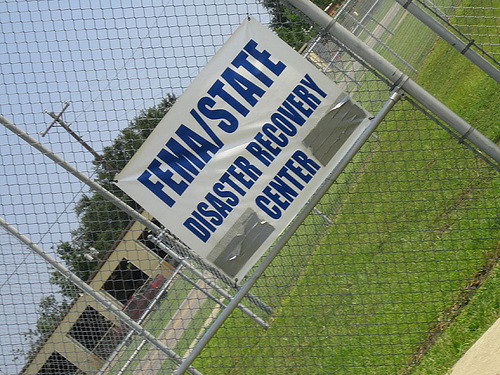
FEMA Details Disaster “Deductible” Plan for States, Insurers See an Opportunity
The proposal to create “public assistance deductible” for federal disaster aid is moving ahead with an the average state paying $22 million in upfront costs before relief is issued, according to documents released last week by the Federal Emergency Management Agency (FEMA).
And with already cash-strapped state’s balking, insurance and reinsurance companies see the deductible plan as a way of expanding the private market by financing the deductibles that could top $100 million for big, catastrophe-prone states like California and Florida.
“Current public policy does not incentivize sub-sovereign public entities (e.g. States, municipalities) to manage the burden of their natural disaster risk,” said Carolyn Coda vice president of Americas Regulatory Risk Management at reinsurance Swiss Re in a comment letter submitted to FEMA last year concerning the deductible. “Swiss Re believes that FEMA’s establishment of a disaster deductible could be a positive, concrete step to shift risk away from the government and into the private sector.”
Under the plan proposed last year by FEMA, states would pay an upfront cost in the form of a “deductible” before receiving aid following a natural disaster. While states could cut their deductible by applying for various credits, the intent of the proposal is to “incentivize” state resilience to disasters and reduce federal disaster costs.
Last week FEMA issued an update to the proposal that includes a base deductibles for each state offset by formulas that measure a region’s “relative fiscal capacity and unique disaster risk profile.
The first is a “Fiscal Capacity Index” that looks to measure a state’s ability to absorb the cost of a natural catastrophe loss and a “Composite Risk Index” that seeks to understand a state’s “relative disaster risk level.”
Not surprisingly, hurricane and storm target Florida has the highest deductible under the update formulas ($141.5 million) followed earthquake prone California ($141.03 million). Some of the other states with highest deductibles under the new formula include Louisiana ($73.90) and Texas ($73.72 million). Montana had the lowest deductible of $6.23 million, according to FEMA.
While many local and state officials questioned the deductible program’s structure as too costly and punitive, insurers and reinsurances see it as an opportunity for the private market to sell FEMA deductible financing structures to states.
“By implementing a financial plan, including private insurance, public entities can price their exposure, reduce the burden to taxpayers, increase the speed and quality of recovery, and decrease their over-dependence on debt issuance post-event,” Swiss Re’s Coda said. “incentivizing the purchase of private insurance as a way to buy down the proposed disaster deductible, prior to having access under Public Assistance, helps align the interests of the various stakeholders to reduce risk.”
The Union of Concerned Scientists commended FEMA on its initial plan, but warned implementation was key. “[Deductibles] could help encourage states to take pre-disaster protective actions to make communities more resilient to disasters,” the group said in its letter to FEMA. “Nevertheless, great care must be taken in establishing the details of such a proposal because there is a real risk that this type of concept could also lead to sub-optimal, inequitable, or risky outcomes if those details are poorly handled.”
FEMA is asking for comments on the updated deductible formula by April.
Risk Market News Newsletter
Join the newsletter to receive the latest updates in your inbox.





